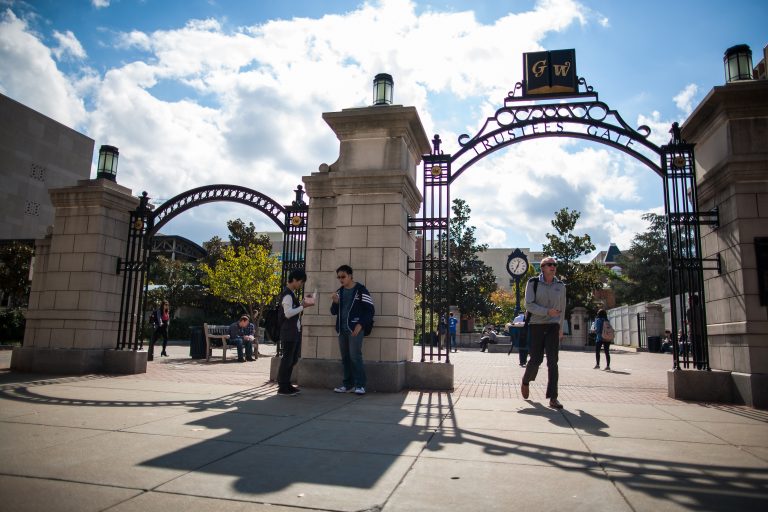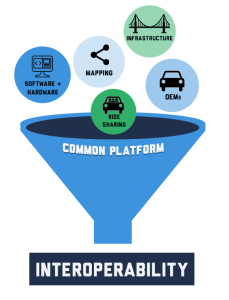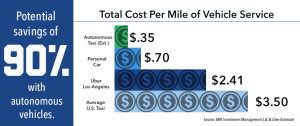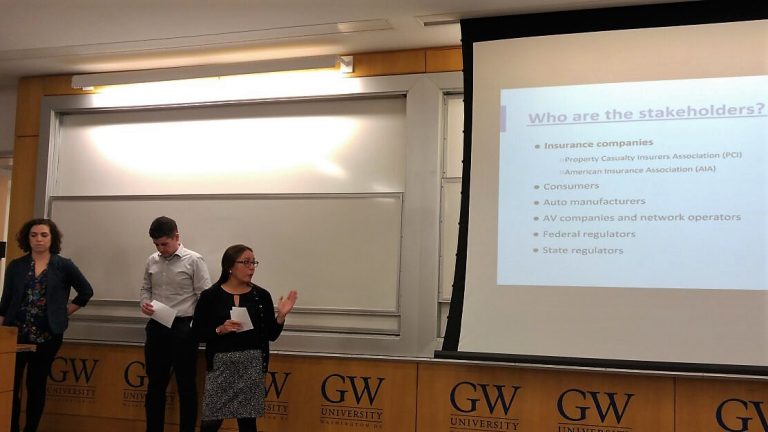Written By: D’Antione Copeland, Lee Fauteux, Bobby Peddireddy, Gina Romero, Global MBA Class of 2018
Like many other smart devices, autonomous vehicles will eventually become a part of the Internet of Things (IoT). Autonomous Vehicles (AVs) will need to share enormous amounts of data with smart infrastructure and other connected cars in order to operate safely and efficiently under a variety of different conditions. Existing wireless networks simply do not have the capacity to handle the 4,000 GB of data that Intel predicts will be shared per car on a daily basis.1 To accomplish this, wireless data grids will have to move beyond the capabilities currently offered by 4G networks.
The fifth generation wireless, also known as 5G, is a fast approaching network system that is set to be available in late 2018. 5G will have a wider bandwidth, faster speeds, higher capacity, improved 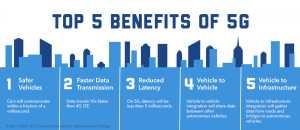 network coverage, and less latency than 4G networks. Experts predict the 5G network is what is needed to successfully launch autonomous vehicles.2 Autonomous vehicles will shape the future of mobility and infrastructure because they will possess technology that communicates with other cars, roads, bridges, pedestrians, etc. This aggregated data will lead to the creation of Smart Cities with smart infrastructures, and the 5G network is vital to properly gather and process massive amounts of data in real time. It is essential that AVs have this ultra-high speed network because communication between vehicles and infrastructure must always be completely up-to-the-minute to ensure the safety of everyone on the road. The bandwidth and speed made possible by 5G networks will benefit AVs by making cloud computing more able to reliably aid connected cars in making split-second decisions.
network coverage, and less latency than 4G networks. Experts predict the 5G network is what is needed to successfully launch autonomous vehicles.2 Autonomous vehicles will shape the future of mobility and infrastructure because they will possess technology that communicates with other cars, roads, bridges, pedestrians, etc. This aggregated data will lead to the creation of Smart Cities with smart infrastructures, and the 5G network is vital to properly gather and process massive amounts of data in real time. It is essential that AVs have this ultra-high speed network because communication between vehicles and infrastructure must always be completely up-to-the-minute to ensure the safety of everyone on the road. The bandwidth and speed made possible by 5G networks will benefit AVs by making cloud computing more able to reliably aid connected cars in making split-second decisions.
This blog is part of a series created under the direction of Bonnie Pierce, Lecturer in Strategic Management and Public Policy, for the GW Business School class “Business and Society: Autonomous Vehicles.”
1 Landau, Deb. “Intel 5G: The Communications Key to Autonomous Driving” January 2017.
2 Segan, Sascha. “PC Magazine: What is 5G?” May 2017.


